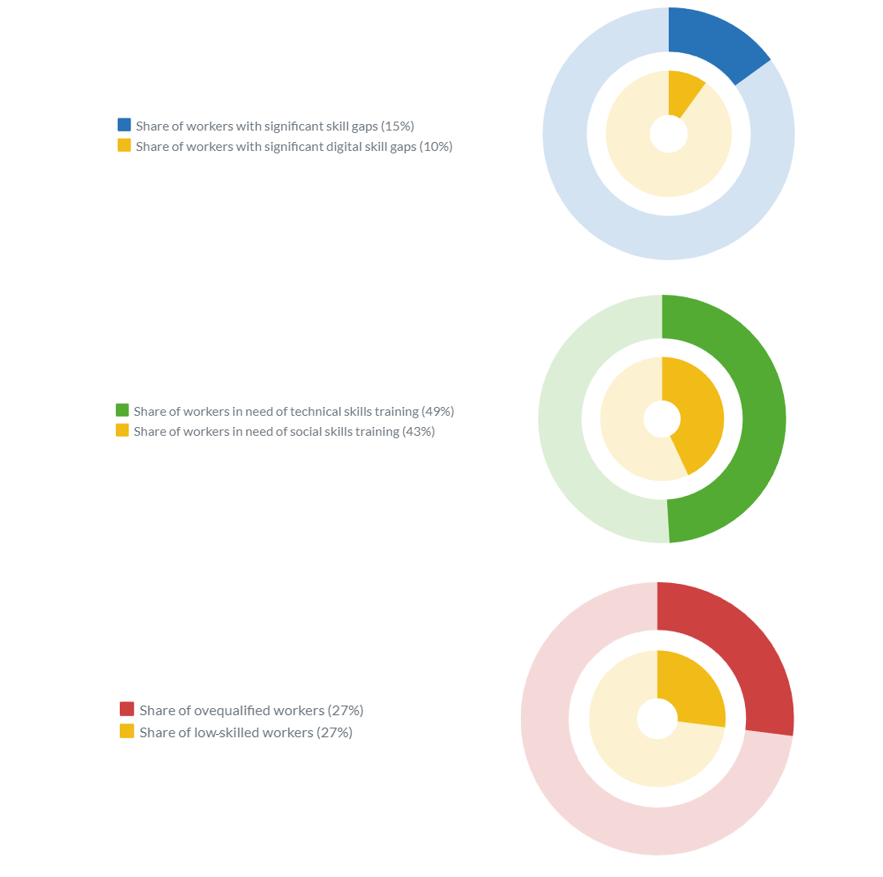Following the analyses of the tourism and automotive sectors, Cedefop has published insights into trends and challenges in construction, another significant sector for workers with vocational education and training (VET) qualifications.
Construction is an important part of the EU economy, employing over 13 million people. Spill-over effects in related industries are substantial – millions of other jobs in steel, glass, furniture, plastics, textiles, electrical equipment and other sectors rely on performance and demand created by construction.
It is a catalyst for growth during periods of economic recovery through, for instance, state-funded infrastructure projects. It is also one of the most important areas for the green transition, as it powers the Renovation Wave and the New European Bauhaus, supporting Europe’s cities in becoming smarter and greener. Construction also contributes to the green transition through large-scale installations of wind and solar farms.
While remaining one of the least digitalised sectors in the EU, new digital technologies will shape it with increasing intensity. Demand for highly qualified workers will grow, as will the skill needs for medium- to low-skilled occupations.
Cedefop’s online job advertisement analysis shows a steep increase in demand for skills like the use of CAD software, digital collaboration and creative designing. The Construction Blueprint project assessed key skills gaps concerning digitalisation, green and ecological work and management and communication.
Cedefop’s European skills and job survey highlighted substantial training needs for construction workers. Many workers’ skills are not well-utilised, which is especially true of construction’s significant migrant workforce.
Figure 1: Skill challenges in the construction sector (2021)

Source: Cedefop’s second European skills and jobs survey (2021).
Although the Cedefop skills forecast estimates an overall job decline in construction, especially for its medium- to low-skilled workers, ageing and retirements will still create large demand to replace those who leave. It will largely concern the sector’s key occupations, such as construction workers, construction engineering technicians and electro-engineering workers.
As the sector adapts to the twin transitions and responds to the current disruptions caused by supply-chain problems and rapidly rising prices, cost-reducing technologies will be increasingly used. This will speed up changes in the demand for skills linked to the use of productivity-enhancing construction techniques.
Given the structure of employment in construction, particularly the significant percentage of microenterprises, reskilling workers may be a formidable task. Not meeting the emerging skill needs will be a major constraint on the sector’s capability to respond to the current and future skill challenges.
VET will likely struggle to meet the sector’s future skill needs. VET stakeholders must continue developing initiatives to overcome the challenges raised by digitalisation, the green transition and the ageing workforce.
The challenge of equipping construction workers with the right skills will concern both initial and continuing VET stakeholders. Apprenticeships, a strong VET pathway for the sector, can support efforts of attracting more young and female learners.
Figure 2: Skill needs and challenges in the EU construction sector

Read the full data insight on construction here.



